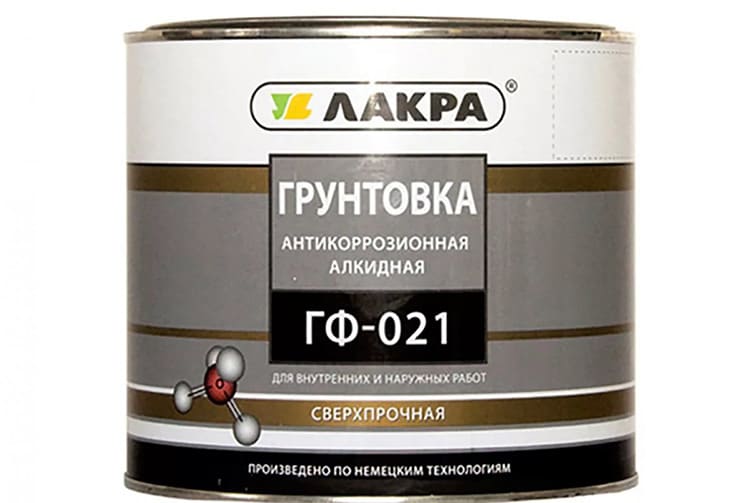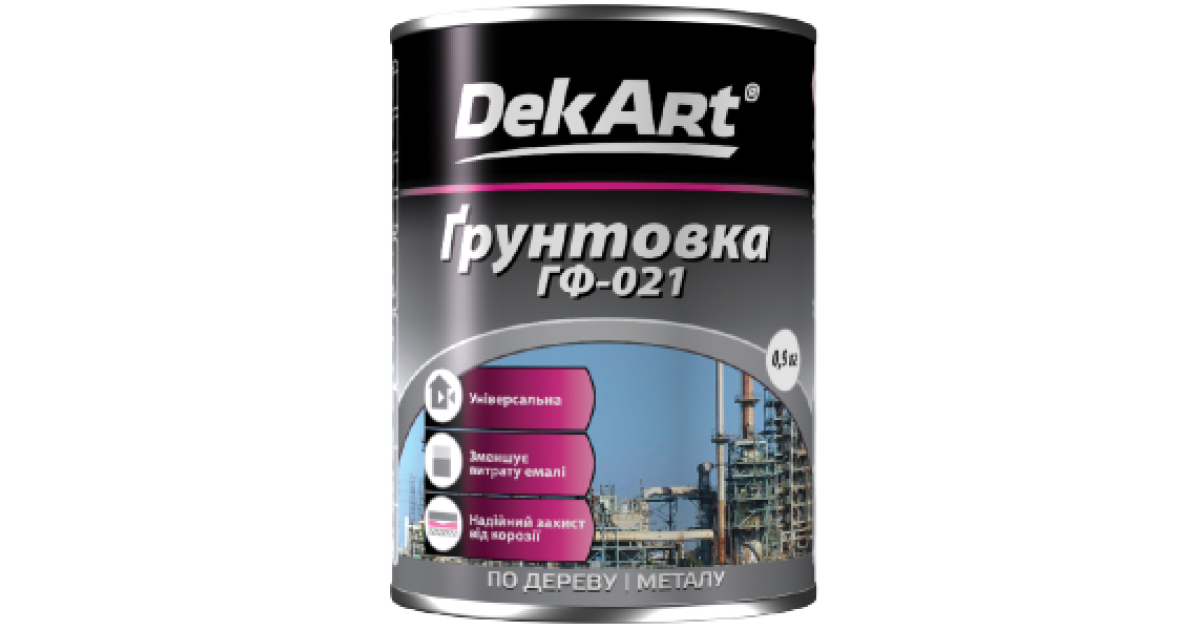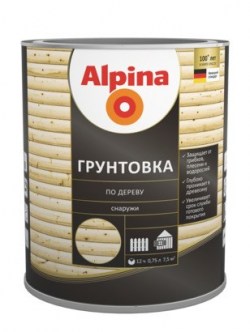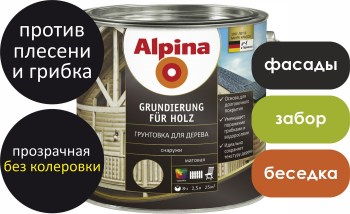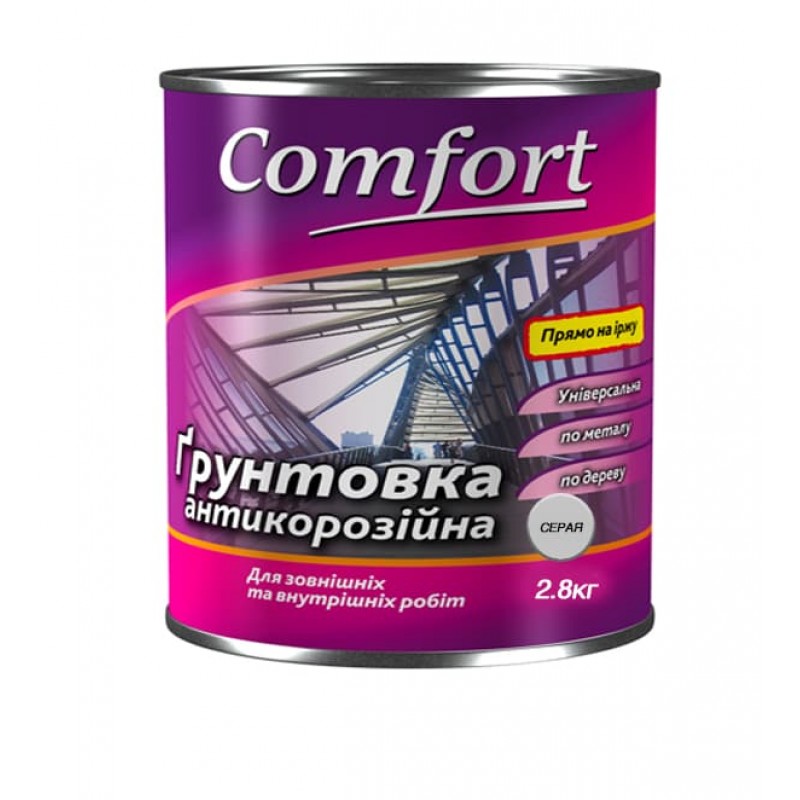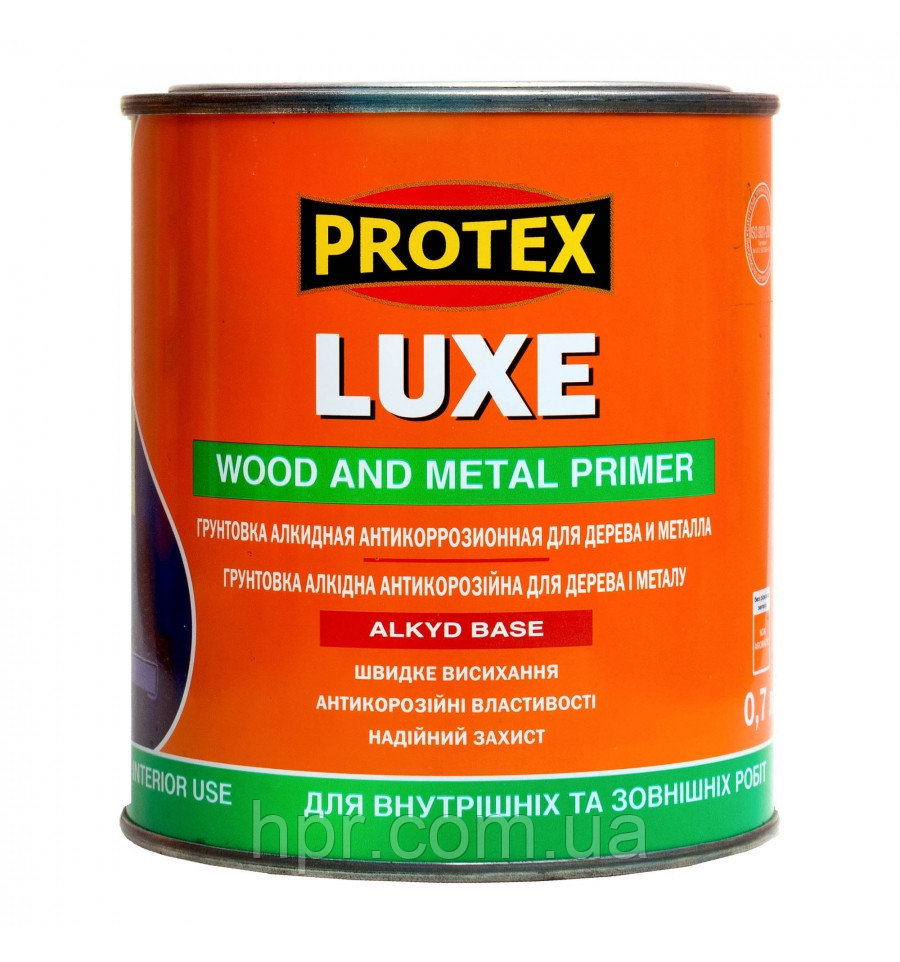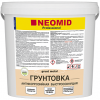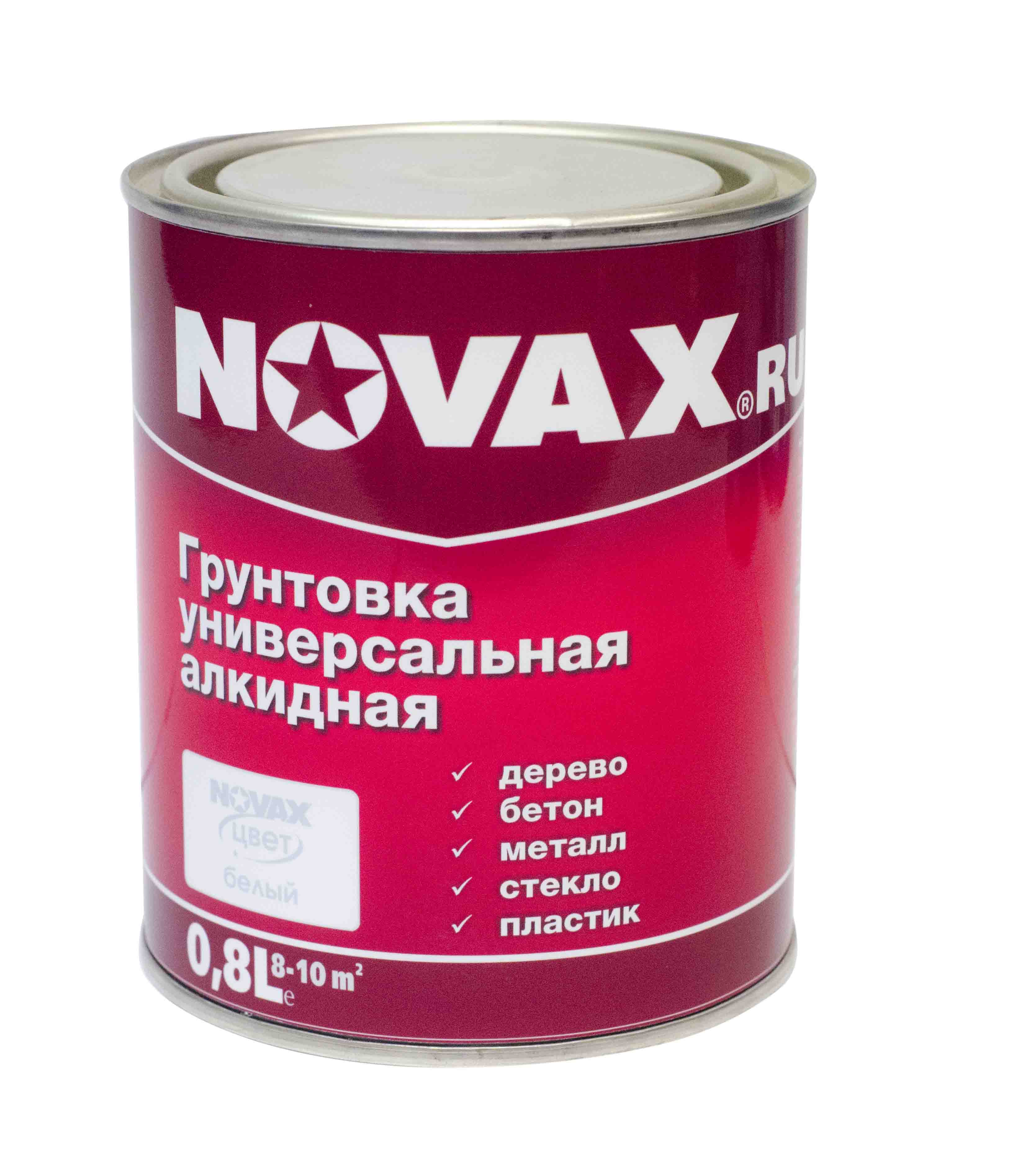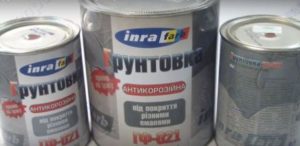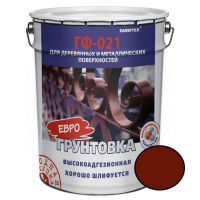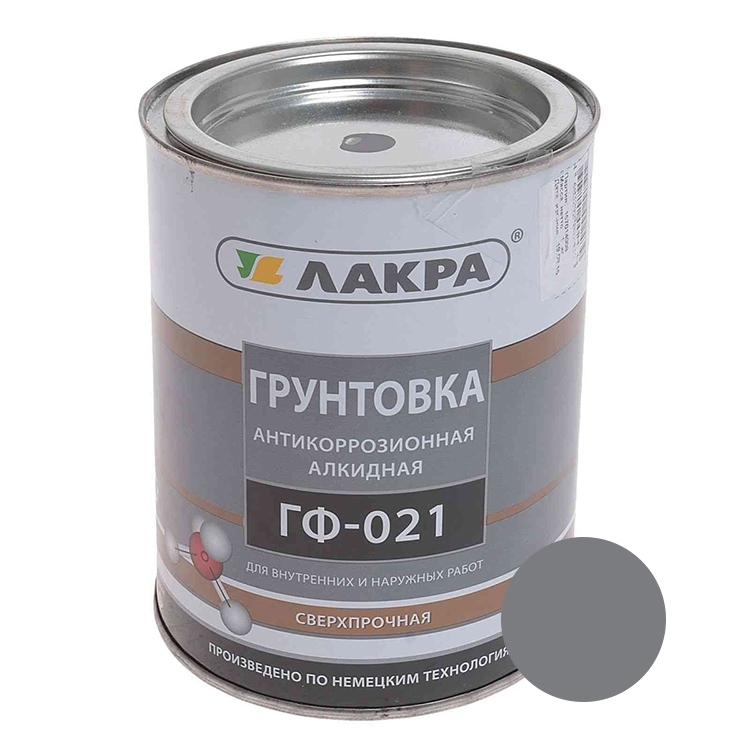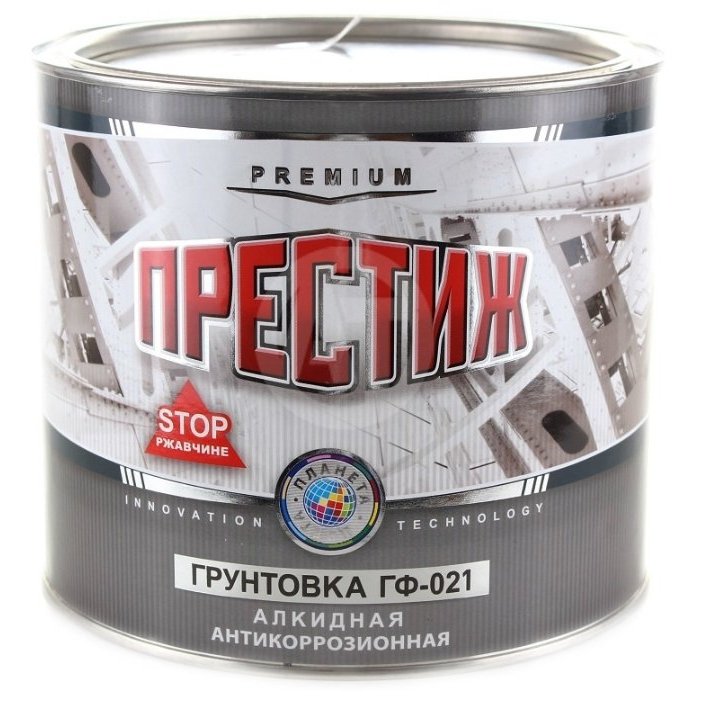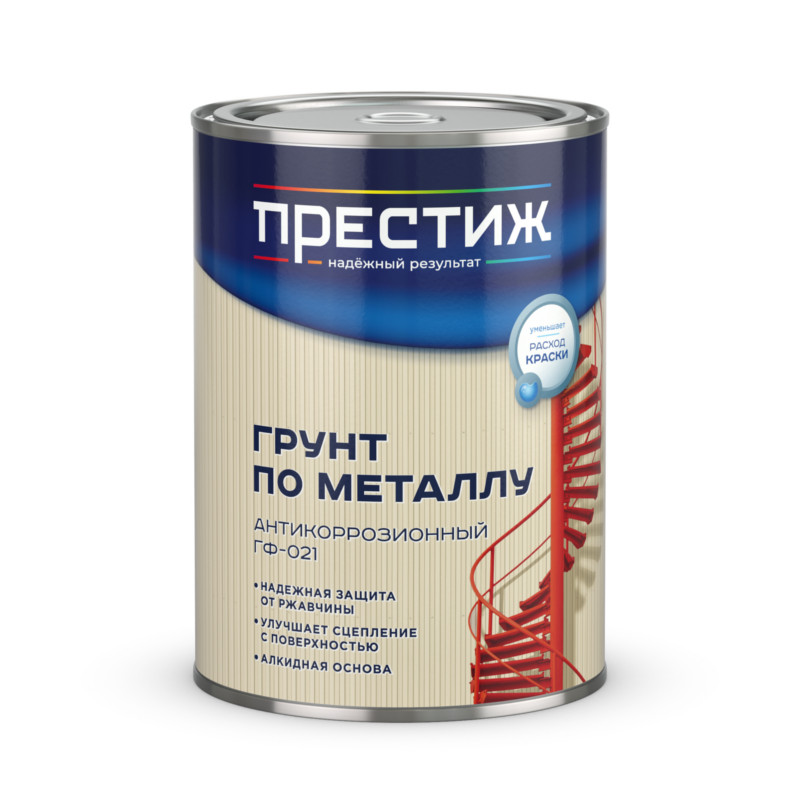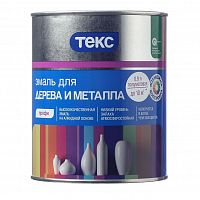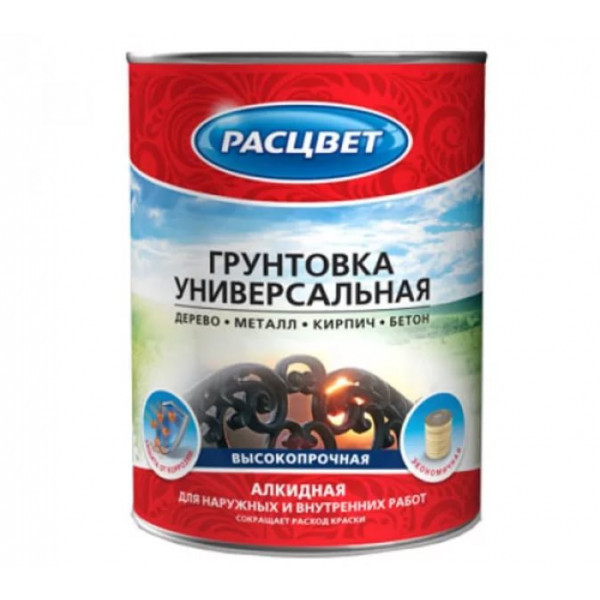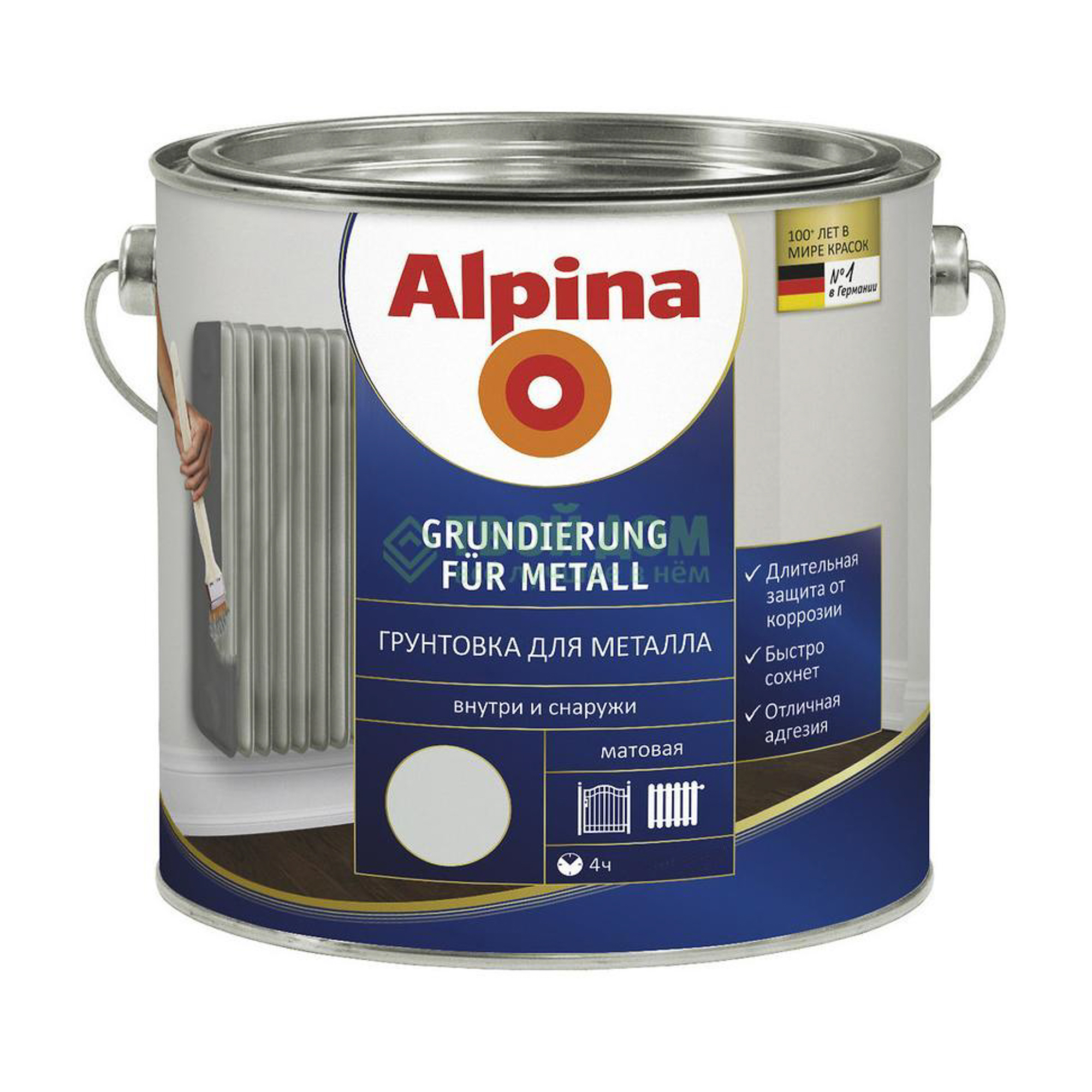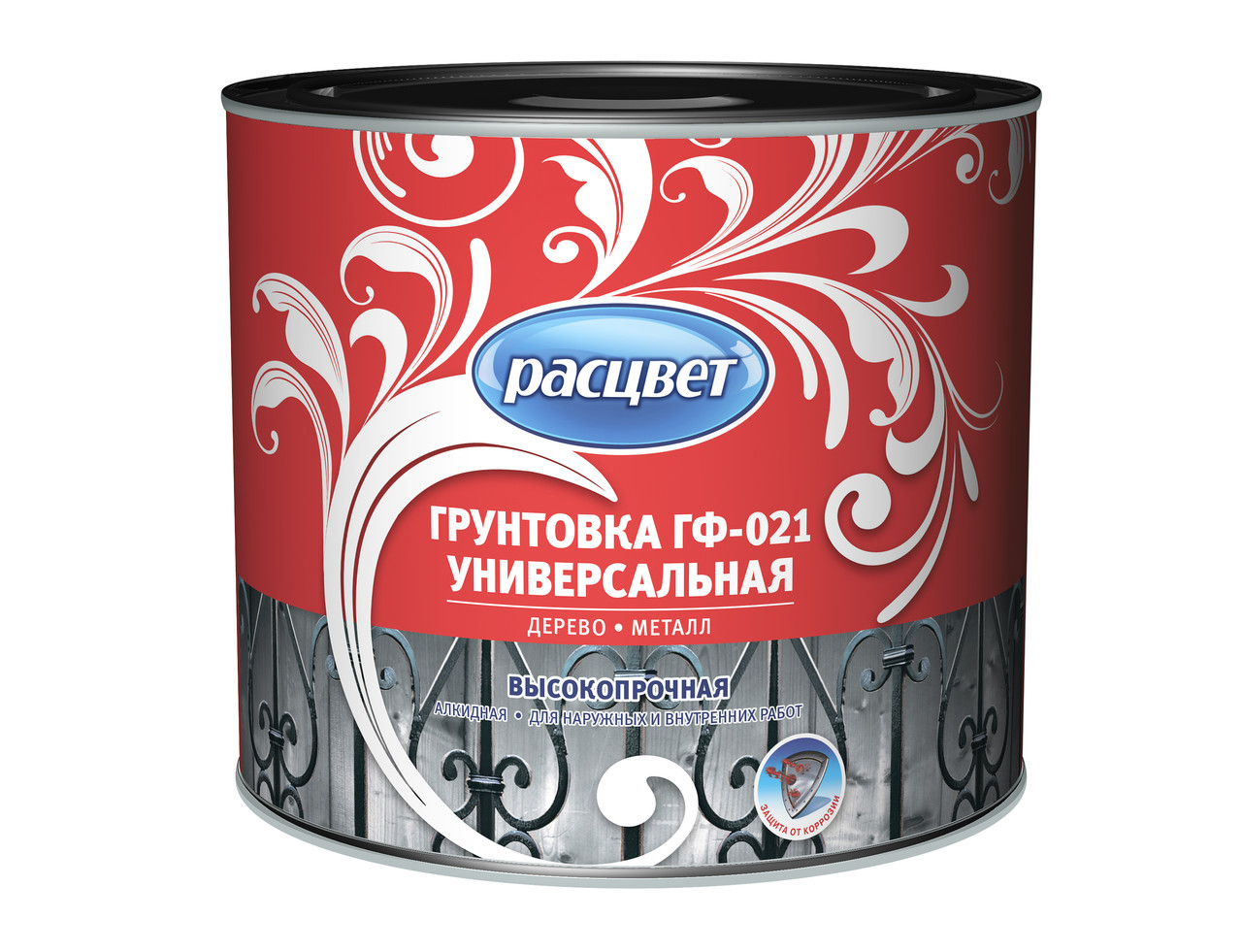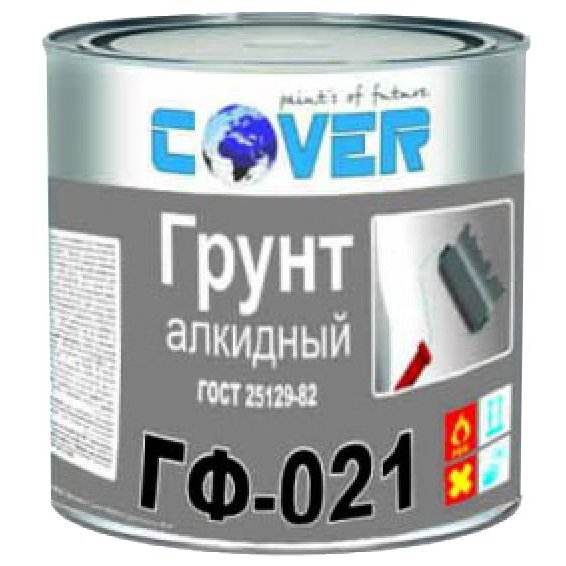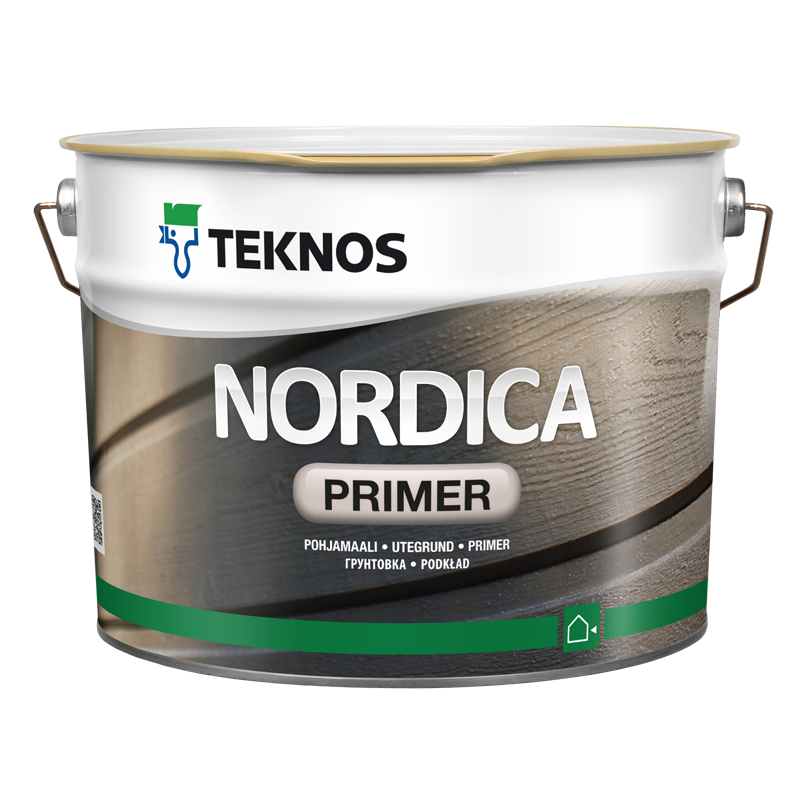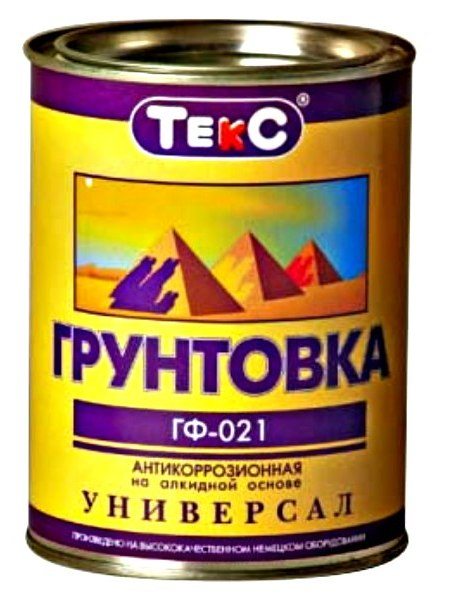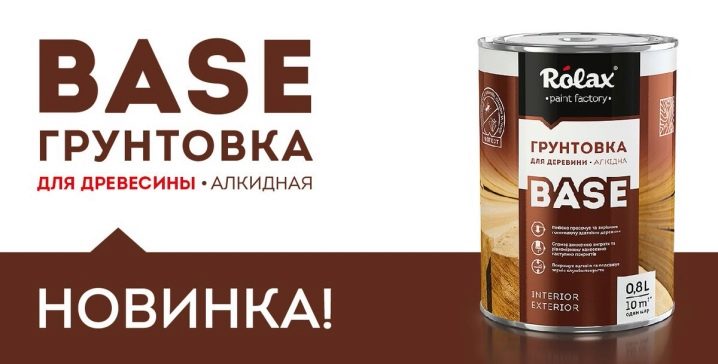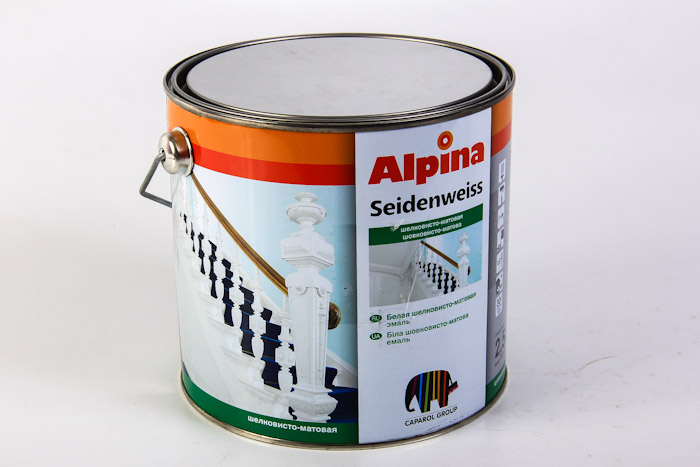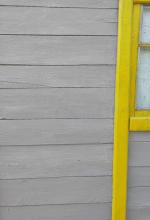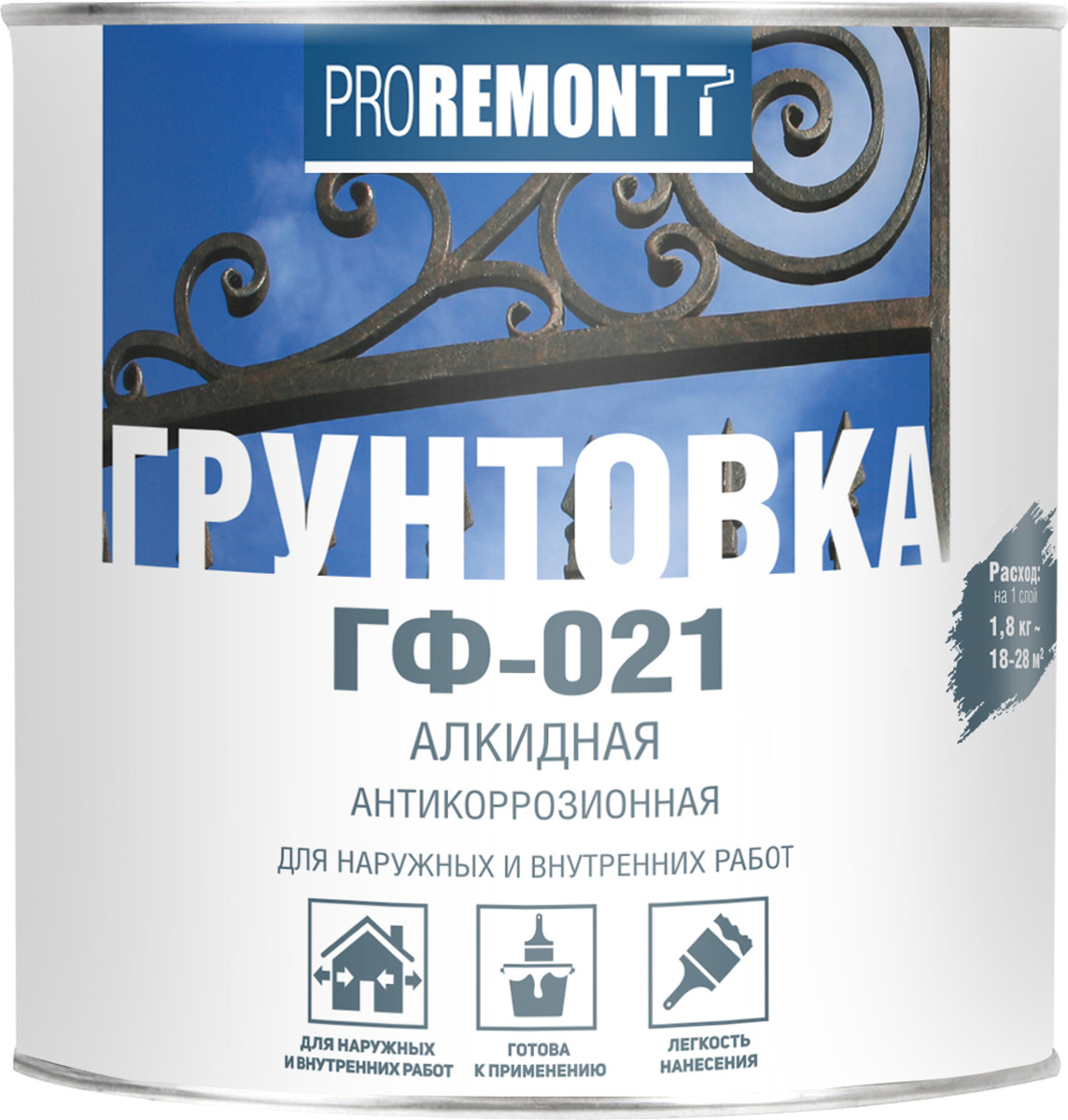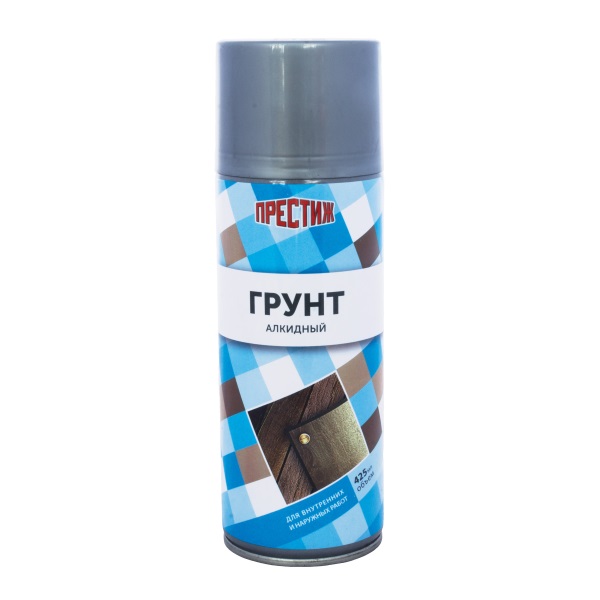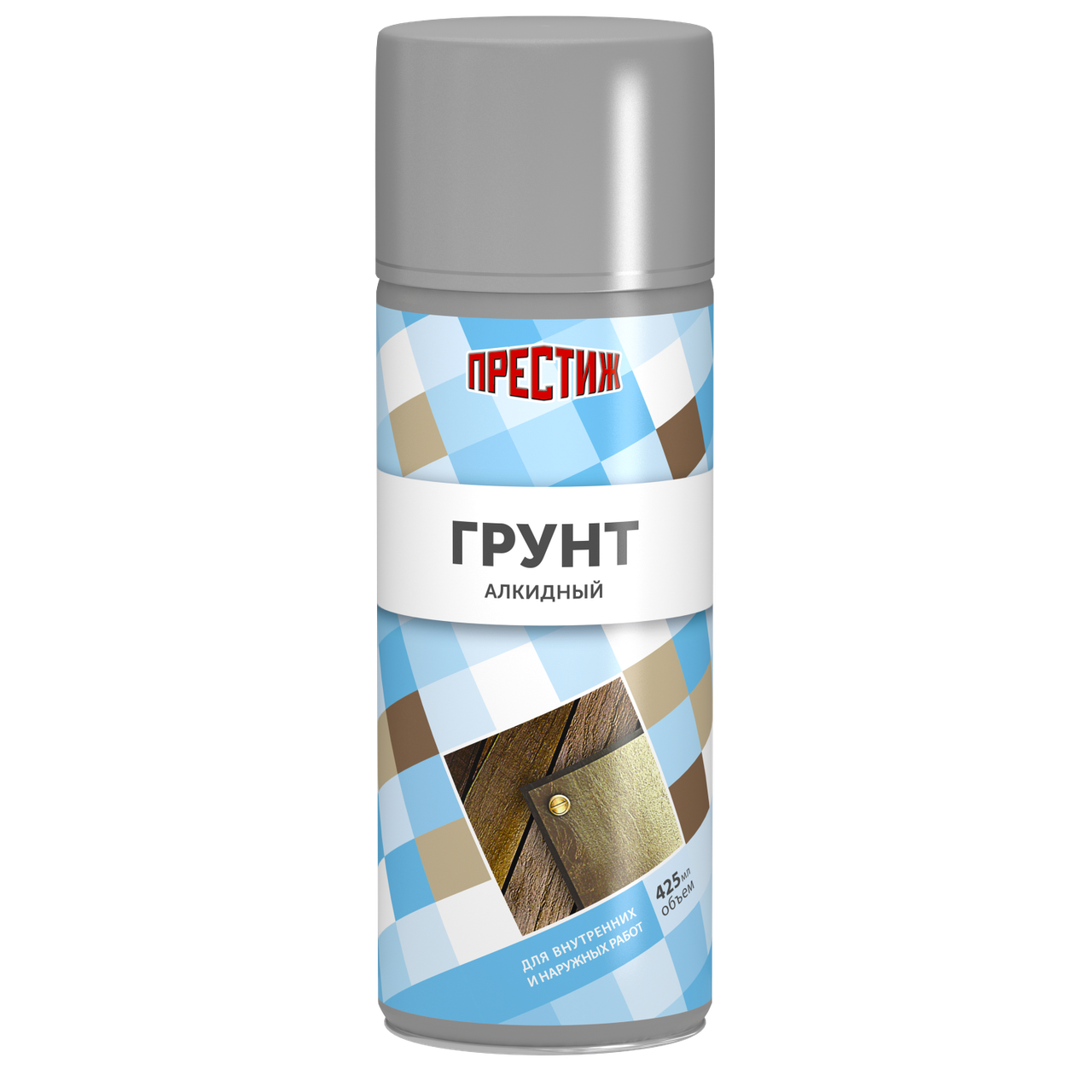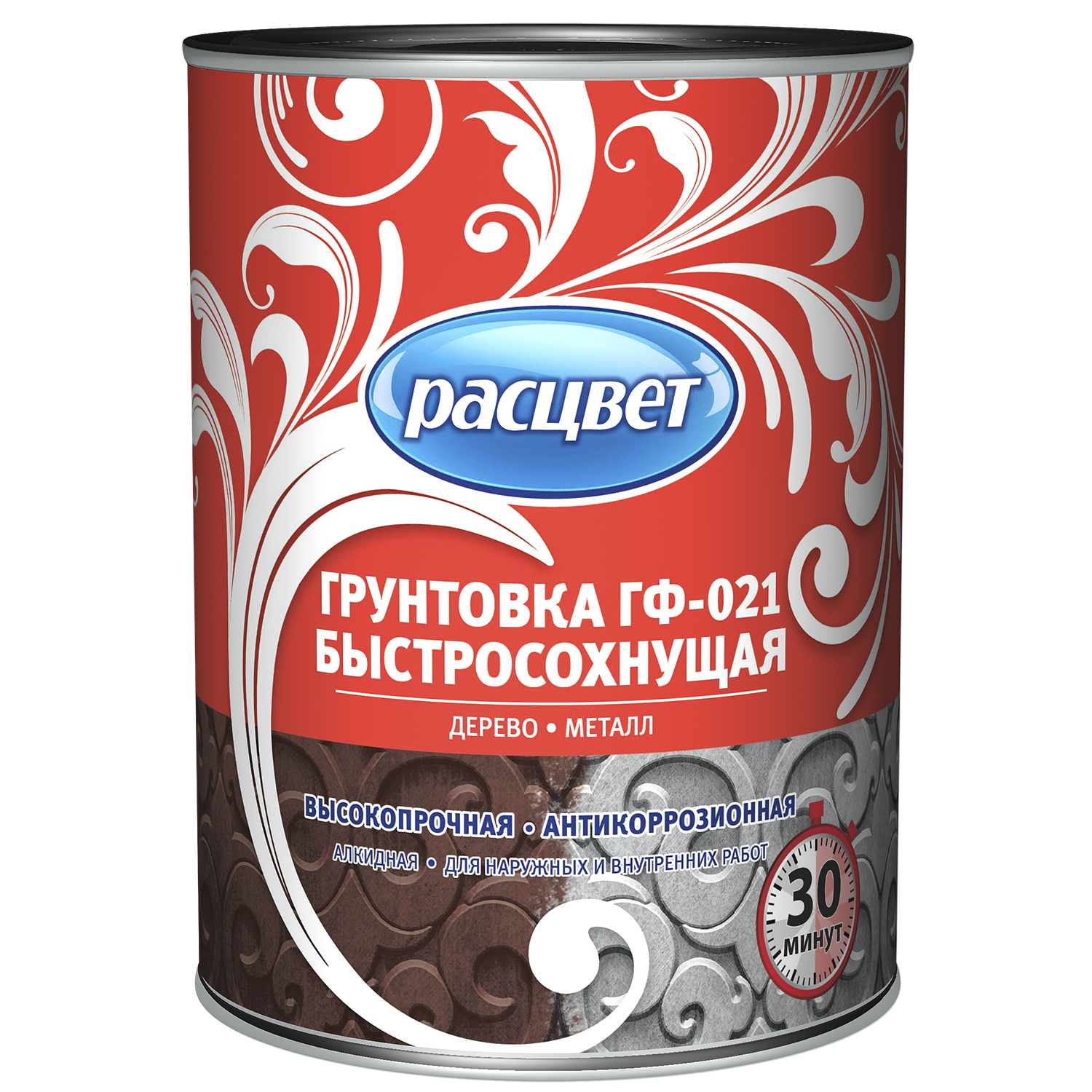Performing work on the application of an alkyd primer
Modern alkyd soils are produced by manufacturers ready for use, that is, no work on diluting the solution, concentrate, dry material is required. Before starting work with alkyd primer, it is recommended to wear protective clothing: gloves, respirator and goggles
This category of primers is toxic, so safety and precautions should be followed
Step-by-step work on priming surfaces with alkyd primer will look like this:
- You should start with preliminary preparation of the surface for priming. If the base is metal, its surface layer is thoroughly cleaned from rust. Wood surfaces are sanded with emery to remove burrs and unevenness. If there are deep cracks in the wooden base, they must be filled with plaster.
- The prepared surface is degreased with a special compound and dried.
- Stir the primer mix before use. Some high concentration solutions may require dilution with a solvent to a certain degree of viscosity. You can find information on whether it is necessary to dilute the soil before work in the instructions for use of the material from the manufacturer.
The primer is applied to the surface with a brush, roller, spray
It is important to make sure that the soil lays down evenly, without forming drips and accumulations in certain areas of the surface.
After the applied layer has dried, the alkyd primer is applied in a second layer. The exact drying time depends on the type of soil, and you can clarify it by studying the instructions for use of the material.
Views
Considering this type of primer, it is necessary to highlight several of its main varieties, differing in composition and properties.
- Glyphthalic. Suitable for all types of finishing work, both external and internal. It is used to create a protective film on wood, metal, glass and concrete. It is imperative to apply paint or varnish over the primer to create a more powerful protective layer. There are separate varieties used only for metals and their alloys, they have additional additives to prevent corrosion.
- Vinyl Perchloric Acid Primer is used only for exterior work on plaster or concrete. Dries up within 60-90 minutes.
- Polyvinyl acetate primer. Dries in 35-40 minutes, used only in combination with paints.
- Composition with polystyrene. It is highly toxic, so it cannot be used for interior finishing work. It is used only for wooden bases.

- Alkyd-urethane composition. Designed for metal processing only. It is often used when working with vehicles or metal structures experiencing various types of environmental influences: precipitation, temperature drops.
- Phosphating. Increases adhesion. Used with metal only.
- Inhibitory. Forms a layer of water and oil repellent surface.
- Passivating. Slows down the corrosion process. Forms a thin waterproof layer on the surface.
- Protective. Designed for work with rust. Forms a base that prevents new scratches and rust spots. One of the most popular manufacturers of such a primer is Prestige.
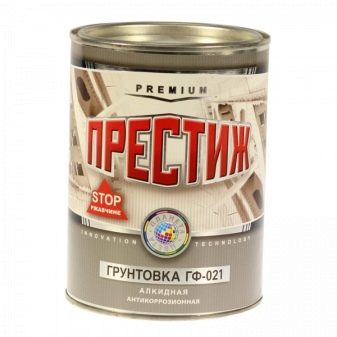
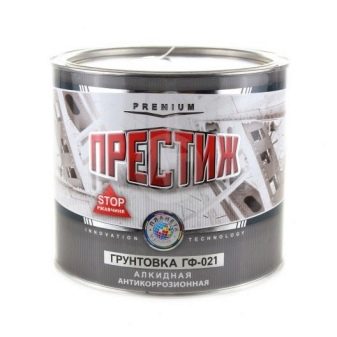
Primer benefits
It is believed that a primer must be applied prior to painting. This is due to the fact that processing with an impregnating composition has a positive effect on the quality of wood, extending its service life. The advantages of the primer:
- disinfection, protection against mold and rot, the substances that make up the solution reliably protect the tree from destruction and extend its service life;
- the primer penetrates deep into the tree and clogs its pores;
- after processing, a thin film appears on the surface, which repels water, protects against dampness and moisture;
- the consumption of paint or varnish is reduced, since after priming the absorbency of the base decreases;
- some antiseptic compositions provide protection against insects and rodents, contain deterrent substances;
- after priming, the surface becomes rough, which improves adhesion;
- the wood contains a coloring pigment - tannin, which can appear on the surface after staining, because of this, dark spots may appear on the surface. The primer seals the pores, preventing the release of tannin and preventing the appearance of dark spots;
- the impregnating composition contains special resins that "glue" wood fibers together, making the material more durable, therefore priming is necessary for old surfaces;
- masks the old coating, makes the color of the base less noticeable, there are also tinted primers that contribute to a deeper coloring of the material.
Performing work on the application of an alkyd primer
The primer is applied using different tools:
- roller;
- brush;
- air or airless spray.
Usually, the most affordable and safest method is chosen. For example, it is extremely difficult to use air spray when priming indoor surfaces, as a mist of thin splashes of material rises, which does not allow breathing and requires the use of insulating gas masks.
Airless spraying is safer. This option is used to prepare relief surfaces replete with small details or irregularities. Typically, these areas are difficult to cover with a brush or roller, but a spray can get the job done in a short amount of time.
Application by brush or roller provides the most economical and clean finishing option. As a rule, the roller is used on flat planes of a large area, and corners, joints, transitions and other areas inaccessible to the roller are brought with brushes.
The primer application process consists of several stages:
- preparation. The surface to be treated is freed from foreign objects, lamps, hinged furniture or equipment. Old skin or trim layer is removed. Crumbling or flaking areas are completely removed, leaving only dense and durable areas. Metal surfaces are cleaned of deposits and rust;
- the surface is degreased with a special compound. The primer is mixed and diluted with white spirit to obtain a working viscosity;
- apply a layer of primer. If this is a primer (deep penetration composition), the material can be spared and applied in a thick layer, which ensures the imbibition of the array to a great depth. Other types of primer should be applied in a thin layer, otherwise it will not be able to dry out qualitatively and will take a lot of time;
- after the first layer has dried, the second is applied. The interlayer drying time is indicated on the material packaging. It is recommended to carry out additional grinding of the surface between the layers, since irregularities and burrs that were not previously visible will become noticeable;
- produce drying of the material. Further work can be performed only after the final drying of the primer layer.
Attention!
When applied by spray primer, the material has to be thinned more, which makes it more liquid and reduces the dry residue. Therefore, more layers have to be applied, which takes time and increases material consumption.
Subtleties of use
All alkyd primers are now sold ready-to-use, so there should be no difficulties in working with them.By following these step-by-step instructions, you will be able to properly apply the primer to any surface.
- The first step is to prepare the material for the application of the primer. If it is metal, then it should be free of rust and corrosion. All burrs are removed from the tree, and the cracks are plastered over and putty.
- Next, you need to degrease the surface.
- The soil mixture is stirred. On the packaging, the manufacturer must indicate exactly the consistency at which the primer will have the best adhesion rate.
- The primer is applied with a roller or brush. For some species, a spray bottle can be used.
- In the process of applying the material, it is necessary to ensure that the layer is as even as possible.
- Most often, after drying, a second coat will need to be applied.
Spraying material consumption is minimal - about 130 grams per 1 sq. m in two layers. When using a roller or brush, the consumption increases to 200 grams per 1 sq. m. It is necessary to carry out work on applying the primer at temperatures from -10 to +25 degrees using personal protective equipment.
The use of an alkyd primer is a must when working on metal or wood surfaces. Improving surface characteristics is a must for every builder, and the use of appropriate formulations will help achieve this goal.
See below for primer application tips.
Characteristics and features
The main features of soils based on alkyd components include the following items:
- Excellent resistance to temperature conditions;
- Reducing the consumption of materials that are used for surface finishing;
- Increasing the indicators of resistance to abrasion, wear and tear and exposure to chemical elements;
- Absolute surface protection from mildew, mold, rust and swelling;
- Eliminate the risk of resin protruding on the wood surface.
It should be noted that soil characteristics are often based on composition. That is why the following types of alkyd mixture should be distinguished, taking into account the varieties of composition:
- Glyphthal soils. They differ from other representatives in that the mixture includes a dye and a special filler, with the help of which you can increase the efficiency of external and internal work;
- Perchlorovinyl mixtures are used in working with concrete, metal and plaster. They have a high degree of drying, but they belong to mixtures with a high level of toxicity. That is why they are used in outdoor work using security measures;
- Polyvinyl acetate mixtures are used before external finishing based on alkyd components. Have the most favorable drying rate - 30 minutes;
- Alkyd-acrylic compounds - are distinguished by deep penetration into the material. A variety of soil is considered a universal processing tool and is successfully used in working with wood and metal.
Despite the big difference in the characteristics of the components that can be included in the composition of alkyd primers, the surface treatment agent always has excellent characteristics. The main thing is to follow the instructions and take advantage of safety measures.
Alkyd primer prices
Prices for an alkyd primer depend on the type of material, manufacturer, technical characteristics, volume of packaging and pricing policy of the outlet. However, it should be noted that in terms of price, alkyd soils are the most affordable for the consumer. Alkyd primers of brands: TIKKURILA, Ceresit, Lacra, Technoline are in special demand of buyers. The average cost of one kilogram of material ranges from 60 to 700 rubles.
Alkyd primers are a versatile material that has excellent technical characteristics, can be used for indoor and outdoor work, and has an affordable price for the consumer.The use of alkyd primers in the repair will allow you to get a beautiful finish, which, moreover, will be reliably protected from the action of negative environmental factors
However, it should be remembered: alkyd soils are toxic and therefore precautions should be taken when working with them.
Varieties of alkyd primers
There are several types of alkyd primers that differ in their properties and area of use.
The most popular and common primers are:
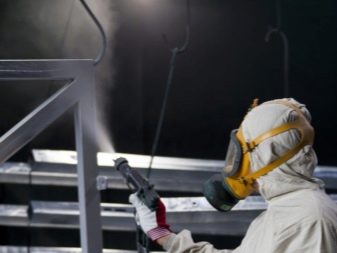
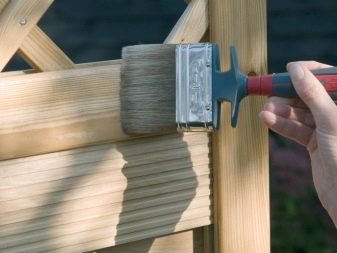
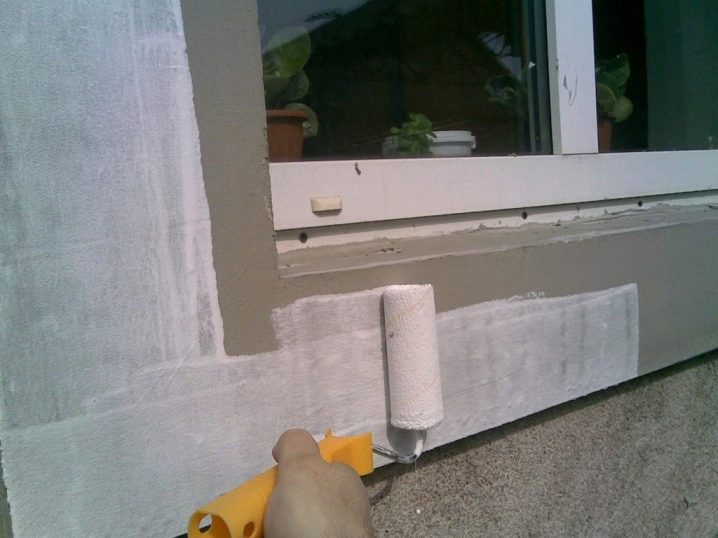
The primer dries as quickly as possible - literally in one hour (at a temperature of 19-21 degrees Celsius). This primer is highly resistant to chemicals. The cost of perchlorovinyl primer is higher than that of glivtalium.
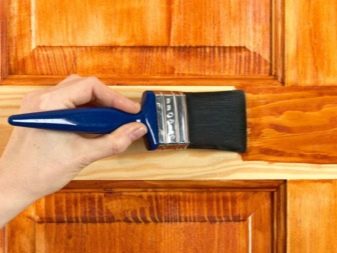
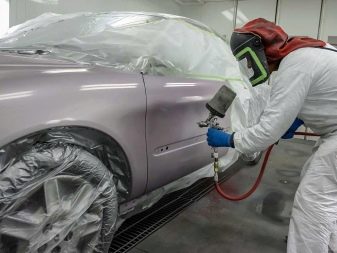
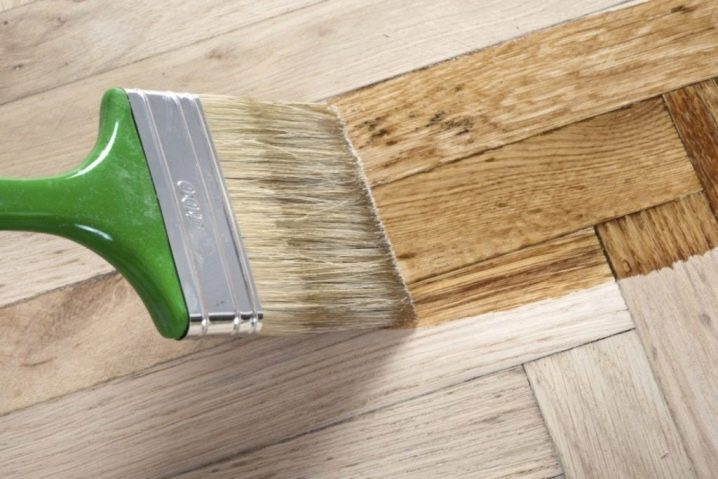
On sale you can find all these types of alkyd primers from various manufacturers. However, one of the most popular today is the prestige soil. On the Internet, you can find a large number of positive customer reviews about the products of this company.
Summing up, we can conclude that an alkyd primer is a number of primers, the properties of which are slightly different. They are designed for processing wood, metal and other types of surfaces. All types of alkyd primers increase the strength of the treated surfaces, their adhesion, and also have antiseptic and many other properties.
For information on how to choose a primer, see the next video.
What is a primer?
Alkyd primers represent a number of the most popular types of primer mixtures that are used in the repair of objects of any purpose. The demand for the formulations is very stable and high, which is achieved due to the positive characteristics and versatility of the mixture.
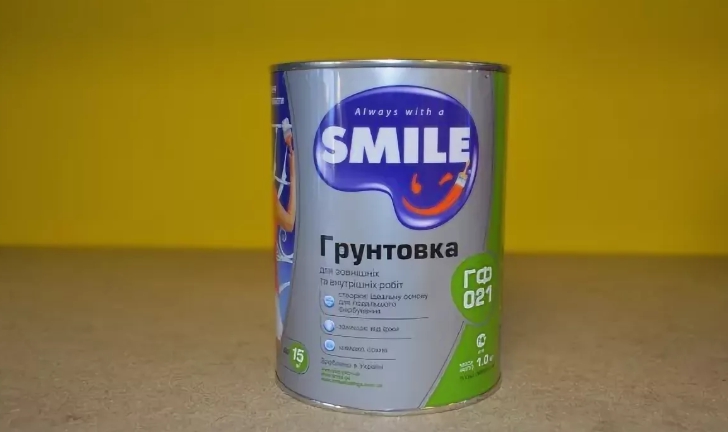
The primer can be used to treat various surfaces, from metal to plastic, wood and even glass.
The primer mix provides excellent surface protection and also forms the basis for optimal coverage with cladding materials. Despite the popularity of the composition, the tool has both positive characteristics and negative features, which will be discussed below.
See also: all types of primers for metal
Dignity
The positive features of alkyd primers are as follows:
- Highest soil strength;
- Absolute resistance to abrasion after the mixture has dried;
- Excellent concealment of resinous knots. They do not disturb the eye even several years after treatment;
- All types of paints (enamel, acrylic, etc.) as well as glue of various types (universal, wallpaper and PVA) are perfectly applied to the ground. Putty can also be applied to the surface;
- Many packages and cans have metal indicated. However, the mixture is great for treating any other surfaces (plastic, wood, laminate, plaster, etc.);
- The ability to apply the composition even at low temperatures, using the main methods to ensure the effectiveness of the mixture;
- Favorable for the working composition, which has a minimum amount of toxins. Despite the recommendations regarding the use of special safety equipment (masks, gloves, etc.), performing work without them will not create harm to health. Also, the time for airing the room after work is significantly reduced in comparison with soils based on other components.
Thanks to these advantages, the mixture has been entrenched in the modern market for a long time, and is also popular in many areas of construction activity.
disadvantages
Despite the impressive list of advantages, a primer based on alkyd components has the following negative features:
Drying takes a long time, so it is important to create optimal conditions with good ventilation;
On contact with the mixture, some paints may curl up. some characteristics of the soil are used only after drying;
Only the top ball of the surface can be machined
The agent does not penetrate into the depth of the material, therefore it cannot be used to fasten loose surfaces. In such cases, acrylic-based primers should be used;
The mixture cannot be used for processing synthetic materials, because they can bubble and stretch significantly;
Despite the minimum list of toxic substances in the primer, the mixture has a specific smell, so it is better to thoroughly ventilate the room;
The tools used to work with the alkyd primer are difficult to wash with plain water. Use white alcohol and try to isolate brushes and rollers from air to avoid drying out.
Despite these disadvantages, alkyd primers are rightfully considered a popular means for primary surface treatment. If you use the mixture correctly, its characteristics and features will speed up the work and improve the quality of the surfaces.
Where is it applied?
Alkyd primers can be used in renovation and finishing work to treat surfaces of various types to ensure resistance to moisture and other biological and chemical influences.
The use of the mixture will protect the surface from the formation of rust and fungus.

Also, treatment with alkyd compounds makes it possible to significantly strengthen the surface of the object and fill its pores and cracks, which will allow using less materials for finishing.
Alkyd primers are used in the following types of work:
- For processing wood, OSB and chipboard before finishing painting;
- For covering walls before applying wallpaper or putty;
- For processing metal before applying the finishing paint.
The use of primer ensures a high level of adhesion between all balls of the finished surface
The outer coating will have impressive indicators of resistance to mechanical, chemical and biological influences, which is important when processing surfaces that are on the street
Primers PRESTIGE
Deep penetration Ceresit CT 17 primer (10 l)
Primer PRESTIGE alkyd aerosol (425 ml)
Primer PRESTIGE GF-021 (1.9 kg)
Primer PRESTIGE acrylic impregnation for concrete (8 kg)
Primer-enamel Prestige gray, 0.9 kg
Primer-enamel for rust Prestige 1.9 kg 3in1 yellow (6)
Deep penetration primer Pufas tov-103168
Deep penetration TEKS primer 2-in-1 Universal.
Deep penetration primer 5 kg Neolab
Primer Cap, deep penetration, 1 kg
Primer PRESTIGE GF-021 (0.9 kg)
Deep penetration primer G 103 for outdoor and.
Enamel acrylic Prestige for concrete floors, gray 1 kg, a.
Paints for metal Primer-enamel prestige 3in1 gray
Deep penetration impregnating primer Pufas tov.
Deep penetration impregnating primer Pufas tov.
Primer-enamel Prestige brown, 0.9 kg
Primer PRESTIGE GF-021 (20 kg)
Paints for metal Primer-enamel prestige 3in1 black
Optimist deep penetration primer for internal
Primer-enamel for rust Prestige 1.9 kg 3in1 black (6)
Deep penetration impregnating primer Pufas tov.
Primer Pufas tov-168465
Primer Aura Beto Grund concentrate (3 l)
Primer PUFAS Decoself M (10 l)
Primer Perfekta Expert of deep penetration (5 l.
Weber Prim Multi (10 l)
Antiseptic primer, deep penetration 10 l
Soil GF-021 red-brown (Prestige) 1.9kg
Primer-enamel for rust Prestige 1.9 kg 3in1 gray (6)
Vorstreichf white primer for pre-painting.
TEX anticorrosive primer GF-021 Universal (1 kg)
Olsta Primer Exterior / Olsta Exterior Primer primer.
Strengthening acrylate primer Tikkurila Euro Primer.
Primer-aerosol Prestige alkyd red-brown 425 m.
Bayramix deep penetration primer Astarfix (1.
TEX anticorrosive primer GF-021 Universal (2.5 k.
Primer KERRY KR-925-x universal (0.52 l)
Deep Penetration Bolars Primer (1 kg)
Primer-aerosol Prestige alkyd gray 425 ml
Primer-aerosol Prestige alkyd white 425 ml
Primer KRAFT PARKETT KP-PU PRIMER (5 kg)
Farbe deep penetration primer Tiefgrund (10 l.
MagicLine primer Acrylic primer (0.265 kg)
Deep penetration primer Expert VDAK-0181M (0.
Primer aerosol Prestige alkyd black 425 ml
Eskaro Aquastop Professional Primer (0.5 l)
Dulux Stain Block Primer (1 L)
Primer Kapitel biosecurity, 1 kg
Deep Penetration Decorazza Primer (10.
Paints for metal Primer-enamel prestige 3in1 brown
Primer Formula Q8 strengthening penetrating antiseptic.
New Star deep penetration primer (10 l)
Primer Kapitel moisture protection, 10 kg
Eskaro Aquastop Professional Primer (1 L)
Antiseptic primer deep penetration 20 l
Deep penetration Ceresit CT 17 primer 10 l.
Ceresit CT-17 universal primer (10l)
Decorazza Primer deep penetration primer (10.
Paints for metal Primer-enamel prestige 3in1 white
Primer Builder Acryl-01 universal (5 kg)
Deep penetration primer with PrimeG antiseptic.
Paleta universal acrylic primer of deep penetration.
Deep penetration primer Ceresit CT 17 universal
primer Leningrad paints economy deep penetration
Primer Lacra GF-021 (2.5 kg)
Deep penetration primer Pufas tov-103168
Strengthening acrylate primer Tikkurila Euro Primer.
Adhesive fast drying primer Tikkurila Otex.
Aerosol primer U-pol acrylic, leveler, gray.
Primer Leningrad paints Econom of Deep penetration
Ceresit CT 17 Universal primer for absorbent o.
universal primer otex ap 1.4 kg, art.203 6201.01.
Primer Ceresit Henkel CT 17 | Ceresit Henkel CT-17.
Primer VINCENT Isoltou (0.48 kg)
Paints for metal Primer-enamel prestige 3in1 blue
Application technology
Alkyd primers can be used for primary finishing work - external and internal, during the reconstruction and overhaul of premises. The most common primer GF-021 has the best qualities of alkyd compounds. Therefore, if in doubt about which soil to buy, it is best to buy GF-021.

An alkyd primer is manufactured industrially. Purchased in the store, it is already ready to eat. Before use, you must read the instructions for use. Usually this material comes in only a few colors:
- Gray,
- dark brown,
- brown with a brick tint.
Since the film subsequently formed by polymer compounds is covered with paint or enamel, the color does not play a special role. However, if you plan to paste the walls with light wallpaper, you should choose a different primer.
Before starting work, surfaces made of concrete, metal or wood must be cleaned of old paint, rust and any other contaminants, degreased, and allowed to dry
It should be remembered about the precautions when working with the composition: to avoid irritation on the skin, hands must be in gloves.
The primer is thoroughly mixed before application. To dilute it, use white spirit or other organic solvents.
You can apply primer to the surface to be treated with a brush or roller.
If necessary, after the first layer has dried, the process can be repeated.
The soil dries completely within 24 hours. Due to its excellent frost resistance, alkyd soils can be stored at low temperatures.
A big disadvantage in the use of alkyd primers is their high toxicity and fire hazard. Therefore, when working with solvents and the composition itself, it is imperative to observe all the necessary safety measures: protect the skin of the hands with gloves, and the respiratory tract with a respirator. Otherwise, it is a fairly convenient material that does not require any special tweaks to use.
Differences from acrylic primers
The difference between these compounds lies in the depth of penetration into the massif. Acrylic compounds are able to absorb deeply, therefore they are most often used on porous surfaces - concrete, brick, plastered, etc. Alkyd compounds are mostly adapted to protect metal or wood and cannot penetrate deeply into the material. Given these features, choose one or another type of primer.We must not forget that both alkyd and acrylic compounds are universal or combined, capable of performing an extended list of tasks. Therefore, in each specific case, you should familiarize yourself with the features and scope of the composition, study the information on the packaging, and only after that make the final decision.

